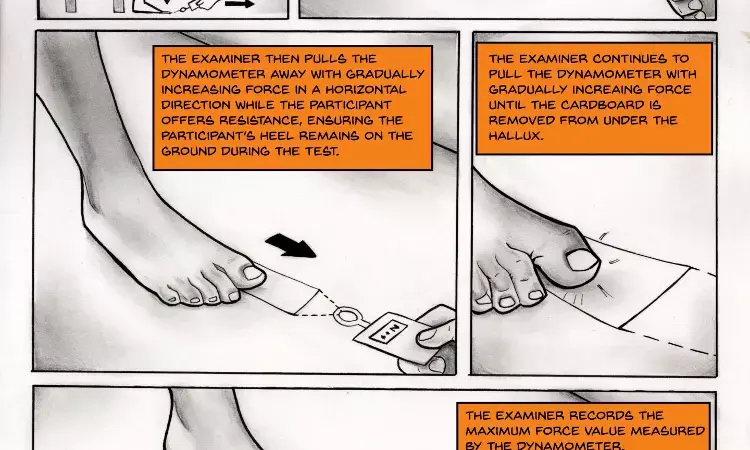- Home
- Medical news & Guidelines
- Anesthesiology
- Cardiology and CTVS
- Critical Care
- Dentistry
- Dermatology
- Diabetes and Endocrinology
- ENT
- Gastroenterology
- Medicine
- Nephrology
- Neurology
- Obstretics-Gynaecology
- Oncology
- Ophthalmology
- Orthopaedics
- Pediatrics-Neonatology
- Psychiatry
- Pulmonology
- Radiology
- Surgery
- Urology
- Laboratory Medicine
- Diet
- Nursing
- Paramedical
- Physiotherapy
- Health news
- Fact Check
- Bone Health Fact Check
- Brain Health Fact Check
- Cancer Related Fact Check
- Child Care Fact Check
- Dental and oral health fact check
- Diabetes and metabolic health fact check
- Diet and Nutrition Fact Check
- Eye and ENT Care Fact Check
- Fitness fact check
- Gut health fact check
- Heart health fact check
- Kidney health fact check
- Medical education fact check
- Men's health fact check
- Respiratory fact check
- Skin and hair care fact check
- Vaccine and Immunization fact check
- Women's health fact check
- AYUSH
- State News
- Andaman and Nicobar Islands
- Andhra Pradesh
- Arunachal Pradesh
- Assam
- Bihar
- Chandigarh
- Chattisgarh
- Dadra and Nagar Haveli
- Daman and Diu
- Delhi
- Goa
- Gujarat
- Haryana
- Himachal Pradesh
- Jammu & Kashmir
- Jharkhand
- Karnataka
- Kerala
- Ladakh
- Lakshadweep
- Madhya Pradesh
- Maharashtra
- Manipur
- Meghalaya
- Mizoram
- Nagaland
- Odisha
- Puducherry
- Punjab
- Rajasthan
- Sikkim
- Tamil Nadu
- Telangana
- Tripura
- Uttar Pradesh
- Uttrakhand
- West Bengal
- Medical Education
- Industry
Simple paper grip test may predict risk of falls and monitor muscle weakness

DESIGNED BY STAFFORDSHIRE UNIVERSITY CARTOON AND COMIC ARTS STUDENT JOSH THOMAS WHO WON A COMPETITION TO ILLUSTRATE THE STUDY. view more
CREDIT: STAFFORDSHIRE UNIVERSITY/JOSH THOMAS
Researchers at Staffordshire University have developed a simple screening test (EPGT) for lower limb strength that can be used to monitor foot/ankle weakening for better prevention of falls.
The "enhanced paper grip test" validated by researchers from the Centre for Biomechanics and Rehabilitation Technologies (CBRT) at Staffordshire University involves pulling a small card from underneath the participant's foot while asking them to grip with their big toe (Hallux).The test is reliable and accurate and can be used in diabetic foot clinic.
The proposed test can potentially be used to monitor muscle weakness in clinics for better falls-risk assessment in patients with diabetes.
Dr Aoife Healy, Associate Professor of Human Movement Biomechanics at CBRT, said: "The paper grip test is a simple, clinically applicable test to detect muscle weakness in the foot. The current paper builds on our previous work and shows its usefulness in assessing strength and balance in this group of vulnerable patients."
The experiment involved assessing twenty healthy volunteers at Staffordshire University's specialist Biomechanics labs and ten people with diabetes at a diabetic foot clinic in India.
Hallux grip force was previously found to be strongly linked to the strength of all muscle groups of the foot and ankle and to the ability to maintain balance. The latest results published in Gait and Posture on a modified test shows the reliability and validity of Hallux grip force during clinical assessment.
Dr Lakshmi Sundar, a co-author in this study and a diabetic foot specialist from Chennai in India, added: "This type of simple clinical assessment is extremely valuable in low resource settings and helps in providing effective clinical advice."
Dr Panagiotis Chatzistergos, Associate Professor in Orthopaedic and Rehabilitation Biomechanics, who led this study highlighted: "The original version of the paper grip test was shown to be effective in detecting foot muscle-weakening but its outcome is operator-dependent. To overcome this limitation, we have developed this enhanced test that replaces the pass/fail outcome with a continuous measurement of the pulling force that is needed to remove the card."
This latest study is part of the Centre for Biomechanics and Rehabilitation Technologies' wider work in the area of diabetic foot management which includes research to help prevent life-threatening foot ulcers and amputations.
Professor Nachi Chockalingam, Director of the Centre for Biomechanics and Rehabilitation Technologies, said: "Falls and fear of falling are a major issue in the management of older adults. Also, falling for the first time sets in motion a cycle of increased fear of falling, reduced activity and loss of strength. This leads to a higher risk for further falls. So, it is important to identify individuals who might fall and preventing the first fall is extremely important."
Hina Zahid Joined Medical Dialogue in 2017 with a passion to work as a Reporter. She coordinates with various national and international journals and association and covers all the stories related to Medical guidelines, Medical Journals, rare medical surgeries as well as all the updates in the medical field. Email: editorial@medicaldialogues.in. Contact no. 011-43720751
Dr Kamal Kant Kohli-MBBS, DTCD- a chest specialist with more than 30 years of practice and a flair for writing clinical articles, Dr Kamal Kant Kohli joined Medical Dialogues as a Chief Editor of Medical News. Besides writing articles, as an editor, he proofreads and verifies all the medical content published on Medical Dialogues including those coming from journals, studies,medical conferences,guidelines etc. Email: drkohli@medicaldialogues.in. Contact no. 011-43720751


